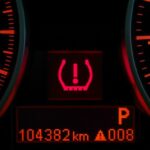Understanding your vehicle’s emissions system is crucial, especially when it comes to passing inspection. One key component of this system is the readiness monitor. These monitors are essentially self-tests performed by your car’s computer to ensure all emission control systems are functioning correctly. When these monitors haven’t completed their checks, you might encounter an “Overall Readiness Result Fail” during an emissions test. But what does this mean, why does it happen, and most importantly, how can you fix it?
What Exactly is a Readiness Monitor?
Think of readiness monitors as internal health checks for your car’s emissions system. Your vehicle’s onboard computer runs these tests to verify that components like the oxygen sensors, catalytic converter, and evaporative emissions system are operating as they should. A “Completed” status for these monitors indicates a successful self-test, while “Not Completed” means the test hasn’t run yet. If too many monitors are in the “Not Completed” state, your vehicle will receive an overall readiness result fail.
What Triggers a “Readiness Result Fail”?
Emission testing centers use specific thresholds to determine a “Readiness Result Fail” based on the number of “Not Completed” monitors. These thresholds vary depending on your vehicle’s fuel type and model year:
| Vehicle Type | Model Year | Number of “Not Completed” Monitors for Fail |
|---|---|---|
| Gasoline Powered | 1996 – 2000 | 3 or more |
| Gasoline Powered | 2001 and Newer | 2 or more |
| Diesel Powered | 1997 to 2009 | 1 or more |
| Diesel Powered | 2010 and Newer | 2 or more |
These exceptions are in place to account for vehicles with known manufacturer-related readiness monitor issues. It’s important to note that certain catalytic converter diagnostic trouble codes (P0420 to P0439) require a “Catalytic Converter: Completed” status on a subsequent inspection to achieve a “Readiness Result: Pass.” This ensures repairs related to catalytic converter issues are genuinely effective.
Common Reasons Behind “Not Completed” Monitors
Several factors can lead to readiness monitors showing a “Not Completed” status:
- Recent Battery Change or Disconnection: Disconnecting or replacing your car battery often resets the computer’s memory, including the readiness monitor status.
- Diagnostic Trouble Code (DTC) Clearing: Repair shops sometimes clear DTCs, which can also reset the monitors.
- Computer Power or Grounding Issues: Problems with the vehicle’s computer power supply or grounding can interfere with the self-testing process.
- Unmet Testing Conditions: Each monitor has specific driving conditions required for the self-test to run, such as reaching certain operating temperatures or speeds. If these conditions aren’t met, the monitor will remain “Not Completed.”
- Underlying Emission Problems: Sometimes, a monitor is “Not Completed” because there’s an actual issue within the emission system that hasn’t yet triggered the “Check Engine” light.
- Aftermarket System Installation: Improperly installed aftermarket systems can disrupt the normal operation of emission monitors.
- Software Updates: Vehicle computer software updates can sometimes reset readiness monitors.
Why an “Overall Readiness Result Fail” Matters
Failing an emissions test due to an overall readiness result fail means your vehicle isn’t considered compliant with emission standards at the time of testing. This is because the car’s computer hasn’t confirmed the proper functioning of its emission control systems. Consequently, you may not be able to renew your vehicle registration until the issue is resolved and a passing emissions test is achieved.
How to Resolve “Not Completed” Monitors and Achieve a “Readiness Result Pass”
The most common way to transition monitors from “Not Completed” to “Completed” is by driving your vehicle. A typical recommendation is to drive for 4-7 days under normal city and highway conditions. This allows the vehicle to cycle through its drive cycle, which includes the specific operating conditions needed for each monitor to run its self-test. Consult your owner’s manual for specific drive cycle information for your vehicle make and model.
When Readiness Monitors Remain “Not Completed”
If your readiness monitors stubbornly remain “Not Completed” even after weeks of driving, it’s a strong indication of an underlying problem. In such cases, it’s best to seek assistance from a qualified emissions technician. They can diagnose the reason for the persistent “Not Completed” status, whether it’s a sensor malfunction, a software issue, or another problem within the emissions system. Be sure to inform the technician about any recent repairs, “Check Engine” light history, or battery disconnections, as this information can aid in the diagnostic process.
Readiness Waivers: Are They Possible for a “Readiness Result Fail”?
It’s important to understand that, according to EPA guidelines, waivers are not available for readiness issues. The requirement for completed readiness monitors is a fundamental part of emissions testing to ensure vehicles are actively monitoring and controlling their emissions output. Therefore, addressing the “Not Completed” monitors is essential to pass the emissions test, rather than seeking a waiver.
By understanding readiness monitors and the causes of an “Overall Readiness Result Fail,” you can take proactive steps to ensure your vehicle passes its emissions test and remains environmentally compliant.
